Substantial Climate Response outside the Target Area in an Idealized Experiment of Regional Radiation Management
Abstract
1. Introduction
2. Data and Methodology
2.1. Model Description
2.2. Experimental Design
2.2.1. Cloud Modification
3. Results
3.1. Sustained Mitigation
3.2. Intermittent Mitigation
4. Conclusions
Author Contributions
Funding
Institutional Review Board Statement
Informed Consent Statement
Data Availability Statement
Acknowledgments
Conflicts of Interest
Appendix A
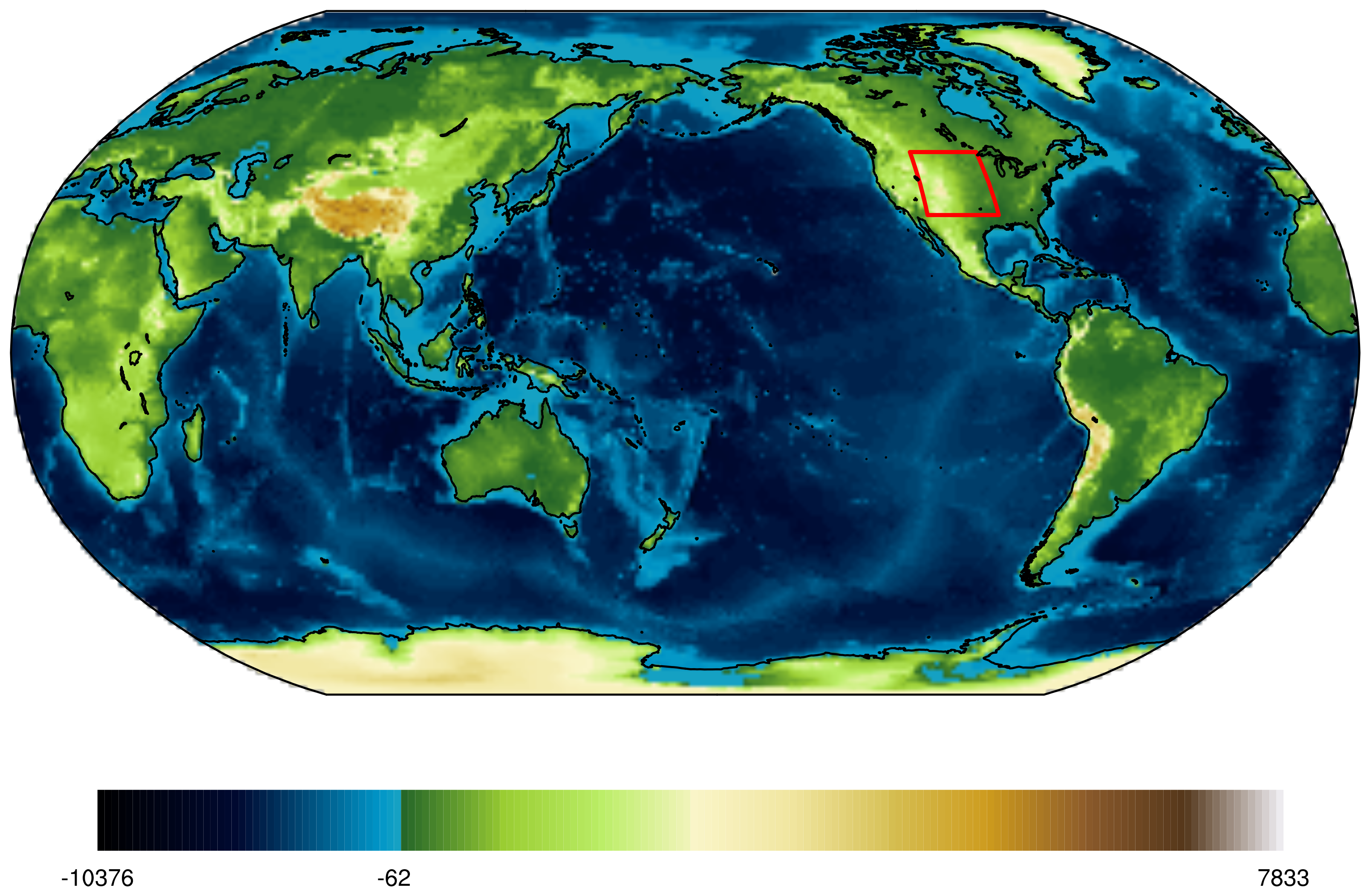

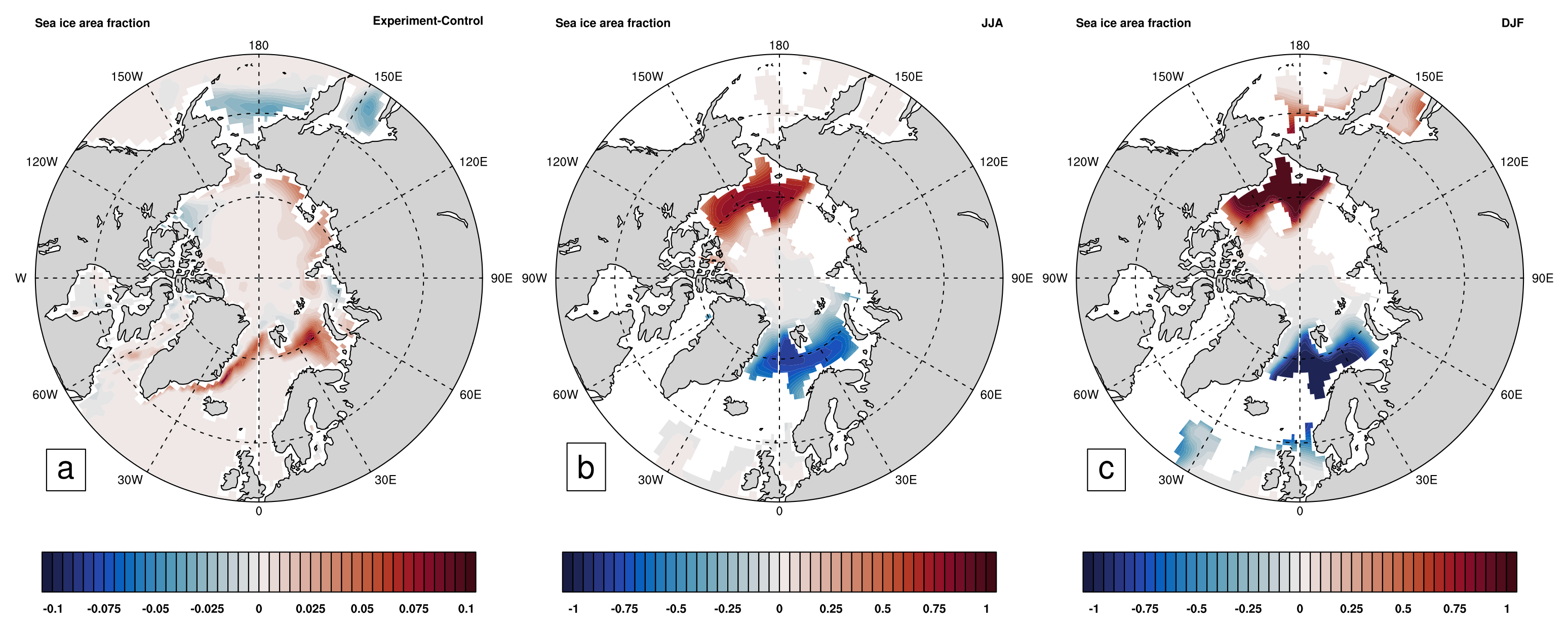
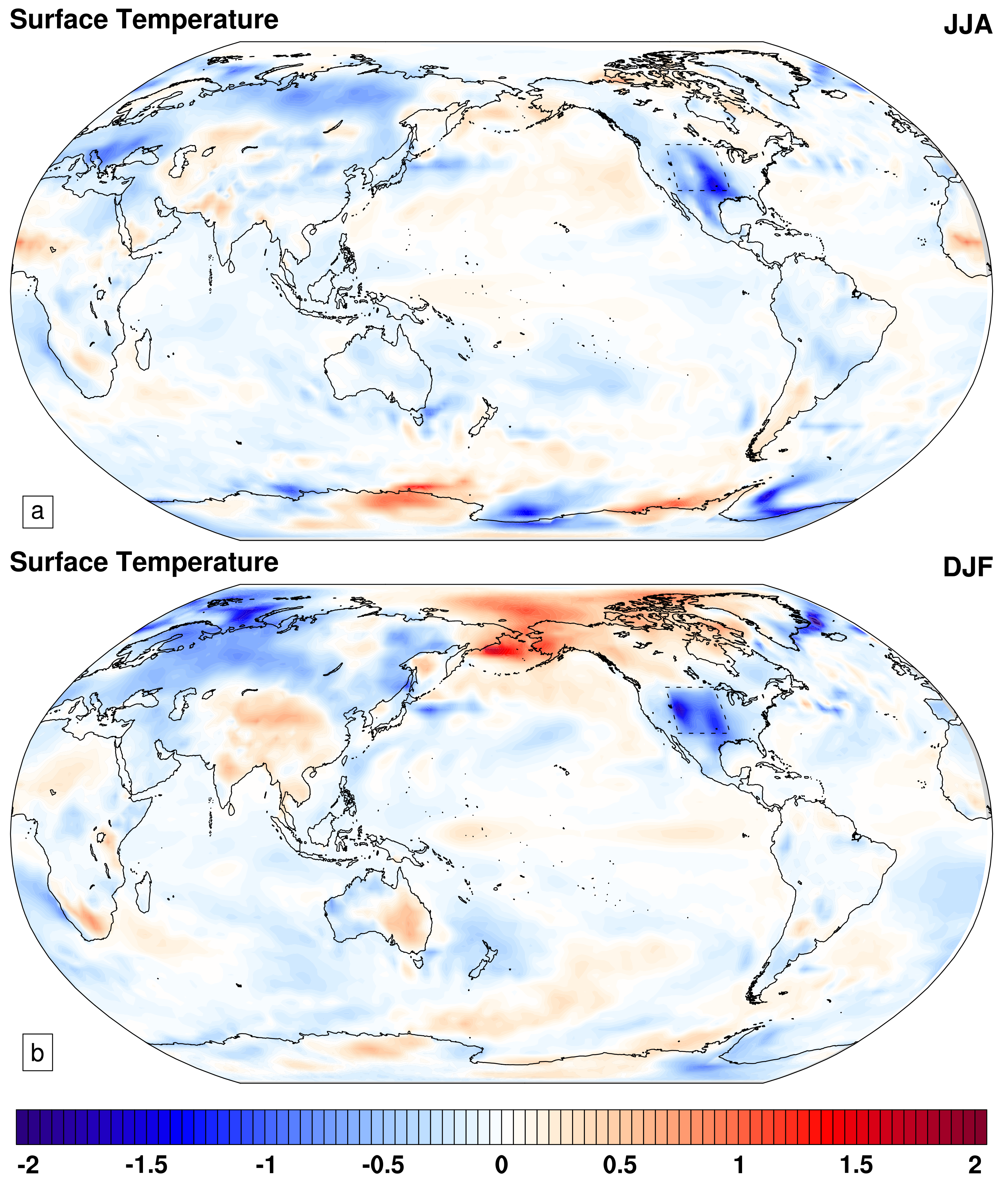


References
- IPCC. Climate Change 2013: The Physical Science Basis. Contribution of Working Group I to the Fifth Assessment Report of the Intergovernmental Panel on Climate Change; Cambridge University Press: Cambridge, UK; New York, NY, USA, 2013; p. 1535. [Google Scholar]
- Boucher, O.; Forster, P.M.; Gruber, N.; Ha-Duong, M.; Lawrence, M.G.; Lenton, T.M.; Maas, A.; Vaughan, N.E. Rethinking climate engineering categorization in the context of climate change mitigation and adaptation. WIREs Clim. Chang. 2014, 5, 23–35. [Google Scholar] [CrossRef]
- MacMartin, D.G.; Wang, W.; Kravitz, B.; Tilmes, S.; Richter, J.H.; Mills, M.J. Timescale for Detecting the Climate Response to Stratospheric Aerosol Geoengineering. J. Geophys. Res. 2019, 124, 1233–1247. [Google Scholar] [CrossRef]
- Betts, R.A.; Collins, M.; Hemming, D.L.; Jones, C.D.; Lowe, J.A.; Sanderson, M.G. When could global warming reach 4 °C. Phil. Trans. R. Soc. A 2010, 369, 67–84. [Google Scholar] [CrossRef]
- Battisti, D.; Blackstock, J.J.; Caldeira, K.; Eardley, D.E.; Katz, J.I.; Keith, D.W.; Koonin, S.E.; Patrinos, A.A.N.; Schrag, D.P.; Socolow, R.H. Climate engineering responses to climate emergencies. IOP Conf. Ser. Earth Environ. Sci. 2009, 6, 452015. [Google Scholar] [CrossRef]
- MacCracken, M. Beyond Mitigation: Potential Options For Counter-Balancing The Climatic And Environmental Consequences Of The Rising Concentrations Of Greenhouse Gases; The World Bank: Washington, DC, USA, 2009; pp. 4938–4943. [Google Scholar]
- Dimitrov, R. The Paris Agreement on Climate Change: Behind Closed Doors. Global Environ. Polit. 2016, 16, 1–11. [Google Scholar] [CrossRef]
- UNFCCC. Adoption of the Paris Agreement, Proposal by the President. 2015. Available online: https://unfccc.int/documents/9064 (accessed on 1 March 2021).
- Keller, D.P.; Feng, E.Y.; Oschlies, A. Potential climate engineering effectiveness and side effects during a high carbon dioxide-emission scenario. Nat. Commun. 2014, 5, 3304. [Google Scholar] [CrossRef]
- Tilmes, S.; Richter, J.H.; Kravitz, B.; MacMartin, D.G.; Mills, M.J.; Simpson, I.R.; Glanville, A.S.; Fasullo, J.T.; Phillips, A.S.; Lamarque, J.F.; et al. CESM1(WACCM) Stratospheric Aerosol Geoengineering Large Ensemble Project. Bull. Amer. Meteor. Soc. 2018, 99, 2361–2371. [Google Scholar] [CrossRef]
- Corner, A.; Pidgeon, N. Geoengineering, climate change scepticism and the ‘moral hazard’ argument: An experimental study of UK public perceptions. Phil. Trans. R. Soc. A 2014, 372. [Google Scholar] [CrossRef]
- Quaas, M.F.; Quaas, J.; Rickels, W.; Boucher, O. Are there reasons against open-ended research into solar radiation management? A model of intergenerational decision-making under uncertainty. J. Environ. Econ. Manag. 2017, 84, 1–17. [Google Scholar] [CrossRef]
- Wigley, T.M.L. A Combined Mitigation/Geoengineering Approach to Climate Stabilization. Science 2006, 314, 452–454. [Google Scholar] [CrossRef]
- Wigley, T.M.L.; Raper, S.C.B. Interpretation of High Projections for Global-Mean Warming. Science 2001, 293, 451–454. [Google Scholar] [CrossRef]
- Rahm, D. Geoengineering Climate Change Solutions: Public Policy issues for National and Global Governance. Humanit. Soc. Sci. Rev. 2018, 08, 139–148. [Google Scholar]
- Cox, P.; Huntingford, C.; Williamson, M. Emergent constraint on equilibrium climate sensitivity from global temperature variability. Nature 2018, 553, 319–322. [Google Scholar] [CrossRef] [PubMed]
- Preston, C.J. Ethics and geoengineering: Reviewing the moral issues raised by solar radiation management and carbon dioxide removal. WIREs Clim. Chang. 2013, 4, 23–37. [Google Scholar] [CrossRef]
- Tilmes, S.; Garcia, R.R.; Kinnison, D.E.; Gettelman, A.; Rasch, P.J. Impact of geoengineered aerosols on the troposphere and stratosphere. J. Geophys. Res. 2009, 114. [Google Scholar] [CrossRef]
- Kravitz, B.; Robock, A.; Boucher, O.; Schmidt, H.; Taylor, K.E.; Stenchikov, G.; Schulz, M. The Geoengineering Model Intercomparison Project (GeoMIP). Atmos. Sci. Lett. 2011, 12, 162–167. [Google Scholar] [CrossRef]
- Jones, A.C.; Haywood, J.M.; Dunstone, N.; Emanuel, K.; Hawcroft, M.K.; Hodges, K.I.; Jones, A. Impacts of hemispheric solar geoengineering on tropical cyclone frequency. Nat. Commun. 2017, 8, 1382. [Google Scholar] [CrossRef]
- Quaas, J.; Quaas, M.F.; Boucher, O.; Rickels, W. Regional climate engineering by radiation management: Prerequisites and prospects. Earth’s Future 2016, 4, 618–625. [Google Scholar] [CrossRef]
- MacCracken, M.C. The rationale for accelerating regionally focused climate intervention research. Earth’s Future 2016, 4, 649–657. [Google Scholar] [CrossRef]
- Stjern, C.W.; Muri, H.; Ahlm, L.; Boucher, O.; Cole, J.N.S.; Ji, D.; Jones, A.; Haywood, J.; Kravitz, B.; Lenton, A.; et al. Response to marine cloud brightening in a multi-model ensemble. Atmos. Chem. Phys. 2018, 18, 621–634. [Google Scholar] [CrossRef]
- Aswathy, V.N.; Boucher, O.; Quaas, M.; Niemeier, U.; Muri, H.; Mülmenstädt, J.; Quaas, J. Climate extremes in multi-model simulations of stratospheric aerosol and marine cloud brightening climate engineering. Atmos. Chem. Phys. 2015, 15, 9593–9610. [Google Scholar] [CrossRef]
- Jones, A.; Haywood, J.; Boucher, O. Climate impacts of geoengineering marine stratocumulus clouds. J. Geophys. Res. 2009, 114, D10106. [Google Scholar] [CrossRef]
- Mitchell, D.L.; Finnegan, W. Modification of cirrus clouds to reduce global warming. Environ. Res. Lett. 2009, 4, 045102. [Google Scholar] [CrossRef]
- Barker, T.; Bashmakov, I.; Bernstein, L.; Bogner, J.; Bosch, P.; Dave, R.; Davidson, O.; Fisher, B.; Grubb, M.; Gupta, S.; et al. Technical Summary. In Climate Change 2007: Mitigation; Cambridge University Press: Cambridge, UK, 2007. [Google Scholar]
- Mitchell, D.L.; Philip, R.; Dorothea, I.; Greg, M.; Timo, N. Impact of small ice crystal assumptions on ice sedimentation rates in cirrus clouds and GCM simulations. Geophys. Res. Lett. 2008, 35. [Google Scholar] [CrossRef]
- Robock, A.; Oman, L.; Stenchikov, G.L. Regional climate responses to geoengineering with tropical and Arctic SO2 injections. J. Geophys. Res. 2008, 113, D16101. [Google Scholar] [CrossRef]
- Matthews, H.D.; Caldeira, K. Transient climate–carbon simulations of planetary geoengineering. Proc. Natl. Acad. Sci. USA 2007, 104, 9949–9954. [Google Scholar] [CrossRef]
- Carr, W.A.; Preston, C.J.; Yung, L.; Szerszynski, B.; Keith, D.W.; Mercer, A.M. Public engagement on solar radiation management and why it needs to happen now. Clim. Chang. 2013, 121, 567–577. [Google Scholar] [CrossRef]
- Moreno-Cruz, J.B.; Ricke, K.L.; Keith, D.W. A simple model to account for regional inequalities in the effectiveness of solar radiation management. Clim. Chang. 2012, 110, 649–668. [Google Scholar] [CrossRef]
- Keith, D.; Parson, E.; Morgan, M.G. Research on global sun block needed now. Nature 2010, 463, 426–427. [Google Scholar] [CrossRef] [PubMed]
- Heckendorn, P.; Weisenstein, D.; Fueglistaler, S.; Luo, B.P.; Rozanov, E.; Schraner, M.; Thomason, L.W.; Peter, T. The impact of geoengineering aerosols on stratospheric temperature and ozone. Environ. Res. Lett. 2009, 4, 045108. [Google Scholar] [CrossRef]
- MacMartin, D.G.; Kravitz, B.; Tilmes, S.; Richter, J.H.; Mills, M.J.; Lamarque, J.F.; Tribbia, J.J.; Vitt, F. The Climate Response to Stratospheric Aerosol Geoengineering Can Be Tailored Using Multiple Injection Locations. J. Geophys. Res. 2017, 122, 12574–12590. [Google Scholar] [CrossRef]
- MacMartin, D.G.; Kravitz, B. Mission-driven research for stratospheric aerosol geoengineering. Proc. Natl. Acad. Sci. USA 2019, 116, 1089–1094. [Google Scholar] [CrossRef] [PubMed]
- Jones, A.; J, H.; Olivier, B.; Ben, K.; Robock, A. Geoengineering by stratospheric SO2 injection: Results from the Met Office HadGEM2 climate model and comparison with the Goddard Institute for Space Studies ModelE. Atmos. Chem. Phys. 2010, 10, 5999–6006. [Google Scholar] [CrossRef]
- MacCracken, M.C.; Shin, H.J.; Caldeira, K.; Ban-Weiss, G.A. Climate response to imposed solar radiation reductions in high latitudes. Earth Syst. Dyn. 2013, 4, 301–315. [Google Scholar] [CrossRef]
- Caldeira, K.; Wood, L. Global and Arctic climate engineering: Numerical model studies. Phil. Trans. R. Soc. A 2008, 366, 4039–4056. [Google Scholar] [CrossRef] [PubMed]
- Haywood, J.M.; Jones, A.; Bellouin, N.; Stephenson, D. Asymmetric forcing from stratospheric aerosols impacts Sahelian rainfall. Nat. Clim. Chang. 2013, 3, 660–665. [Google Scholar] [CrossRef]
- Tilmes, S.; Fasullo, J.; Lamarque, J.F.; Marsh, D.R.; Mills, M.; AlterskjÊr, K.; Muri, H.; Kristjánsson, J.E.; Boucher, O.; Schulz, M.; et al. The hydrological impact of geoengineering in the Geoengineering Model Intercomparison Project (GeoMIP). J. Geophys. Res. 2013, 118, 11036–11058. [Google Scholar] [CrossRef]
- Crutzen, P.J. Albedo Enhancement by Stratospheric Sulfur Injections: A Contribution to Resolve a Policy Dilemma? Clim. Chang. 2006, 77, 211. [Google Scholar] [CrossRef]
- Wood, R.; Ackerman, T.P. Defining success and limits of field experiments to test geoengineering by marine cloud brightening. Clim. Chang. 2013, 121, 459–472. [Google Scholar] [CrossRef]
- Latham, J.; Bower, K.; Choularton, T.; Coe, H.; Connolly, P.; Cooper, G.; Craft, T.; Foster, J.; Gadian, A.; Galbraith, L.; et al. Marine cloud brightening. Phil. Trans. R. Soc. A 2012, 370, 4217–4262. [Google Scholar] [CrossRef]
- Latham, J. Control of global warming? Nature 1990, 347, 339–340. [Google Scholar] [CrossRef]
- Twomey, S. The Influence of Pollution on the Shortwave Albedo of Clouds. J. Atmos. Sci. 1977, 34, 1149–1152. [Google Scholar] [CrossRef]
- Robock, A.; MacMartin, D.G.; Duren, R.; Christensen, M.W. Studying geoengineering with natural and anthropogenic analogs. Clim. Chang. 2013, 121, 445–458. [Google Scholar] [CrossRef]
- Latham, J. Amelioration of global warming by controlled enhancement of the albedo and longevity of low-level maritime clouds. Atmos. Sci. Lett. 2002, 3, 52–58. [Google Scholar] [CrossRef]
- Kosugi, T. Fail-safe solar radiation management geoengineering. Mitig. Adapt. Strateg. Glob. Chang. 2013, 18, 1141–1166. [Google Scholar] [CrossRef]
- Brovkin, V.; Petoukhov, V.; Claussen, M.; Bauer, E.; Archer, D.; Jaeger, C. Geoengineering climate by stratospheric sulfur injections: Earth system vulnerability to technological failure. Clim. Chang. 2009, 92, 243–259. [Google Scholar] [CrossRef]
- Parker, A.; Irvine, P.J. The Risk of Termination Shock From Solar Geoengineering. Earth’s Future 2018, 6, 456–467. [Google Scholar] [CrossRef]
- Duan, L.; Cao, L.; Bala, G.; Caldeira, K. Comparison of the Fast and Slow Climate Response to Three Radiation Management Geoengineering Schemes. J. Geophys. Res. 2018, 123, 11980–12001. [Google Scholar] [CrossRef]
- Gruber, S.; Blahak, U.; Haenel, F.; Kottmeier, C.; Leisner, T.; Muskatel, H.; Storelvmo, T.; Vogel, B. A process study on thinning of Arctic winter cirrus clouds with high-resolution ICON-ART simulations. J. Geophys. Res. 2019, 124. [Google Scholar] [CrossRef]
- Muri, H.; Kristjánsson, J.E.; Storelvmo, T.; Pfeffer, M.A. The climatic effects of modifying cirrus clouds in a climate engineering framework. J. Geophys. Res. 2014, 119, 4174–4191. [Google Scholar] [CrossRef]
- Storelvmo, T.; Boos, W.R.; Herger, N. Cirrus cloud seeding: A climate engineering mechanism with reduced side effects? Phil. Trans. R. Soc. A 2014, 372. [Google Scholar] [CrossRef] [PubMed]
- Campbell, J.R.; Peterson, D.A.; Marquis, J.W.; Fochesatto, G.J.; Vaughan, M.A.; Stewart, S.A.; Tackett, J.L.; Lolli, S.; Lewis, J.R.; Oyola, M.I.; et al. Unusually Deep Wintertime Cirrus Clouds Observed over the Alaskan Subarctic. Bull. Am. Meteorol. Soc. 2018, 99, 27–32. [Google Scholar] [CrossRef] [PubMed]
- Masunaga, H.; Bony, S. Radiative Invigoration of Tropical Convection by Preceding Cirrus Clouds. J. Atmos. Sci 2018, 75, 1327–1342. [Google Scholar] [CrossRef]
- Storelvmo, T.; Kristjansson, J.E.; Muri, H.; Pfeffer, M.; Barahona, D.; Nenes, A. Cirrus cloud seeding has potential to cool climate. Geophys. Res. Lett. 2013, 40, 178–182. [Google Scholar] [CrossRef]
- Tilmes, S.; Jahn, A.; Kay, J.E.; Holland, M.; Lamarque, J.F. Can regional climate engineering save the summer Arctic sea ice? Geophys. Res. Lett. 2014, 41, 880–885. [Google Scholar] [CrossRef]
- Ge, F.; Zhu, S.; Peng, T.; Zhao, Y.; Sielmann, F.; Fraedrich, K.; Zhi, X.; Liu, X.; Tang, W.; Ji, L. Risks of precipitation extremes over Southeast asia: Does 1.5 ∘C or 2 ∘C global warming make a difference? Environ. Res. Lett. 2019, 14, 044015. [Google Scholar] [CrossRef]
- Herring, S.C.; Hoerling, M.P.; Peterson, T.C.; Stott, P.A. Explaining Extreme Events of 2013 from a Climate Perspective. Bull. Amer. Meteor. Soc. 2014, 95, S1–S104. [Google Scholar] [CrossRef]
- Wolf, J.; Adger, W.N.; Lorenzoni, I.; Abrahamson, V.; Raine, R. Social capital, individual responses to heat waves and climate change adaptation: An empirical study of two UK cities. Glob. Environ. Chang. 2010, 20, 44–52. [Google Scholar] [CrossRef]
- Sun, Y.; Zhang, X.; Zwiers, F.W.; Song, L.; Wan, H.; Hu, T.; Yin, H.; Ren, G. Rapid increase in the risk of extreme summer heat in Eastern China. Nat. Clim. Chang. 2014, 4, 1082–1085. [Google Scholar] [CrossRef]
- Jones, G.S.; Stott, P.A.; Nikolaos, C. Human contribution to rapidly increasing frequency of very warm Northern Hemisphere summers. J. Geophys. Res. 2008, 113. [Google Scholar] [CrossRef]
- Meehl, G.A.; Tebaldi, C. More Intense, More Frequent, and Longer Lasting Heat Waves in the 21st Century. Science 2004, 305, 994–997. [Google Scholar] [CrossRef] [PubMed]
- Sillmann, J.; Kharin, V.V.; Zhang, X.; Zwiers, F.W.; Bronaugh, D. Climate extremes indices in the CMIP5 multimodel ensemble: Part 1. Model evaluation in the present climate. J. Geophys. Res. 2013, 118, 1716–1733. [Google Scholar] [CrossRef]
- Wang, M.; Yan, X.; Liu, J.; Zhang, X. The contribution of urbanization to recent extreme heat events and a potential mitigation strategy in the Beijing–Tianjin–Hebei metropolitan area. Theor. Appl. Climatol. 2013, 114, 407–416. [Google Scholar] [CrossRef]
- Keith, D.W.; MacMartin, D.G. A temporary, moderate and responsive scenario for solar geoengineering. Nat. Clim. Chang. 2015, 5, 201–206. [Google Scholar] [CrossRef]
- Irvine, P.; Emanuel, K.; He, J.; Horowitz, L.W.; Vecchi, G.; Keith, D. Halving warming with idealized solar geoengineering moderates key climate hazards. Nat. Clim. Chang. 2019, 9, 295–299. [Google Scholar] [CrossRef]
- Sugiyama, M.; Arino, Y.; Kosugi, T.; Kurosawa, A.; Watanabe, S. Next steps in geoengineering scenario research: Limited deployment scenarios and beyond. Clim. Policy 2018, 18, 681–689. [Google Scholar] [CrossRef]
- Giorgetta, M.A.; Jungclaus, J.; Reick, C.H.; Legutke, S.; Bader, J.; Böttinger, M.; Brovkin, V.; Crueger, T.; Esch, M.; Fieg, K.; et al. Climate and carbon cycle changes from 1850 to 2100 in MPI-ESM simulations for the Coupled Model Intercomparison Project phase 5. J. Adv. Model. Earth Syst. 2013, 5, 572–597. [Google Scholar] [CrossRef]
- Stevens, B.; Giorgetta, M.; Esch, M.; Mauritsen, T.; Crueger, T.; Rast, S.; Salzmann, M.; Schmidt, H.; Bader, J.; Block, K.; et al. Atmospheric component of the MPI-M Earth System Model: ECHAM6. J. Adv. Model. Earth Syst. 2013, 5, 146–172. [Google Scholar] [CrossRef]
- Jungclaus, J.H.; Fischer, N.; Haak, H.; Lohmann, K.; Marotzke, J.; Matei, D.; Mikolajewicz, U.; Notz, D.; von Storch, J.S. Characteristics of the ocean simulations in the Max Planck Institute Ocean Model (MPIOM) the ocean component of the MPI-Earth system model. J. Adv. Model. Earth Syst. 2013, 5, 422–446. [Google Scholar] [CrossRef]
- Milinski, S.; Maher, N.; Olonscheck, D. How large does a large ensemble need to be? Earth Syst. Dyn. 2020, 11, 885–901. [Google Scholar] [CrossRef]
- Welch, B.L. The Generalization of ’Student’s’ Problem When Several Different Population Variances Are Involved. Biometrika 1947, 34, 28–35. [Google Scholar] [CrossRef] [PubMed]
- Boneau, C.A. The effects of violations of assumptions underlying the t test. Psychol. Bull. 1960, 57, 49–64. [Google Scholar] [CrossRef] [PubMed]
- McComiskey, A.; Feingold, G. Quantifying error in the radiative forcing of the first aerosol indirect effect. Geophys. Res. Lett. 2008, 35. [Google Scholar] [CrossRef]
- Kug, J.S.; Jeong, J.H.; Jang, Y.S.; Kim, B.M.; Folland, C.K.; Min, S.K.; Son, S.W. Two distinct influences of Arctic warming on cold winters over North America and East Asia. Nat. Geosci. 2015, 8, 759–762. [Google Scholar] [CrossRef]
- Graf, H.; Davide, Z. Central Pacific El Ni no, "the subtropical bridge", and Eurasian climate. J. Geophys. Res. 2012, 117. [Google Scholar] [CrossRef]
- Hastings, D.A.; Dunbar, P.K.; Elphingstone, G.M.; Bootz, M.; Murakami, H.; Maruyama, H.; Masaharu, H.; Holland, P.; Payne, J.; Bryant, N.A.; et al. The Global Land One-kilometer Base Elevation (GLOBE) Digital Elevation Model, Version 1.0; National Oceanic and Atmospheric Administration, National Geophysical Data Center: Boulder, CO, USA, 1999. [Google Scholar]
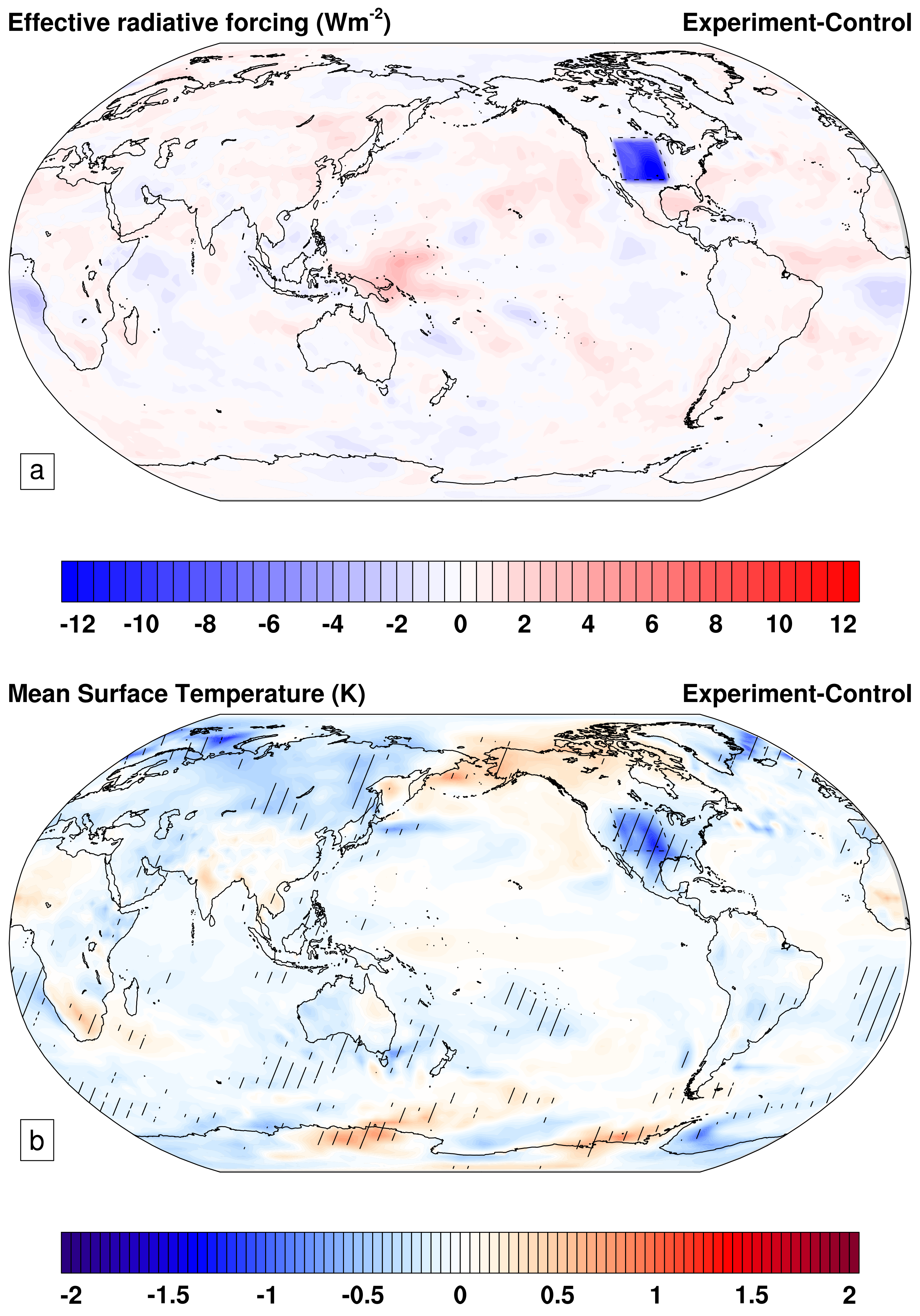
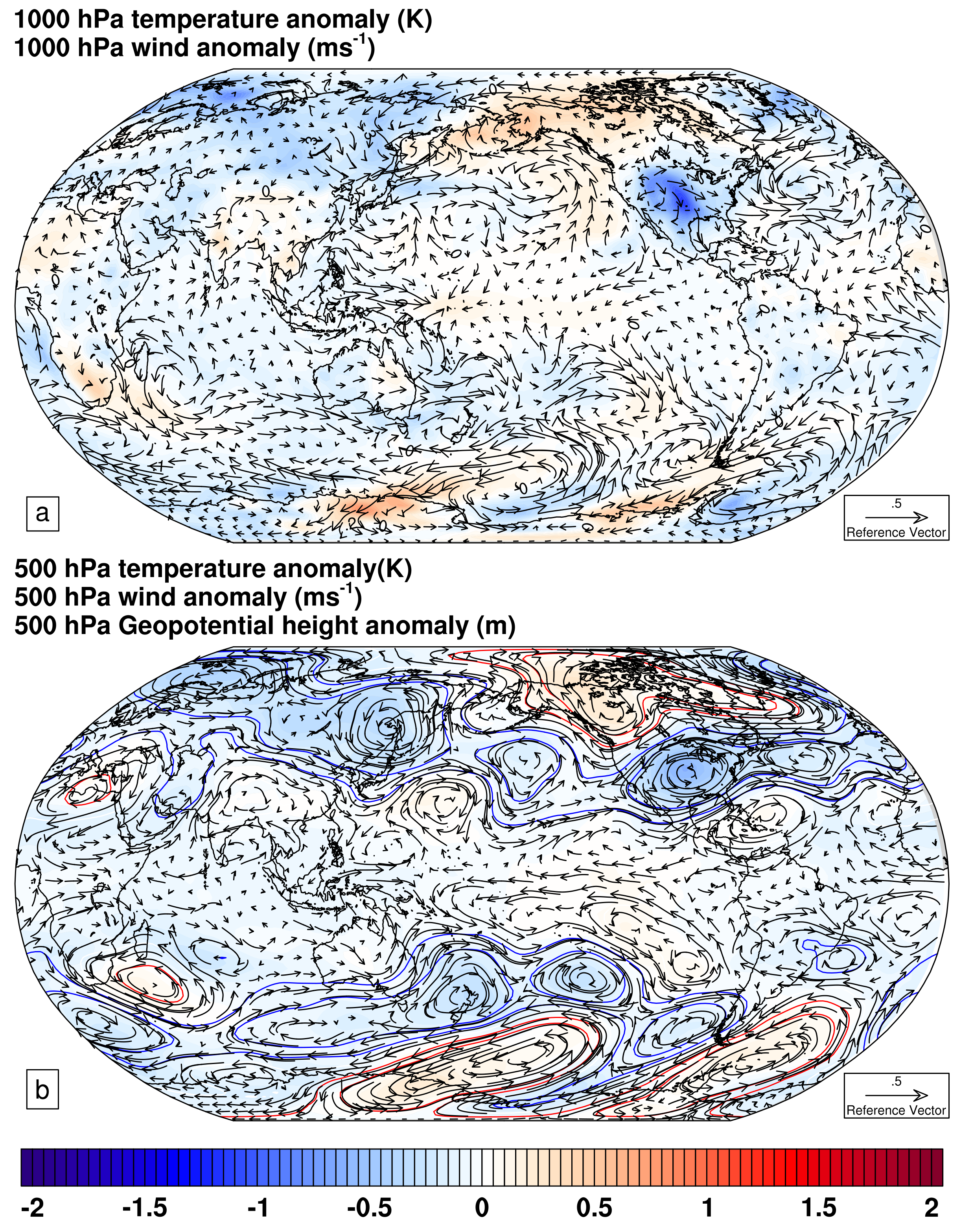

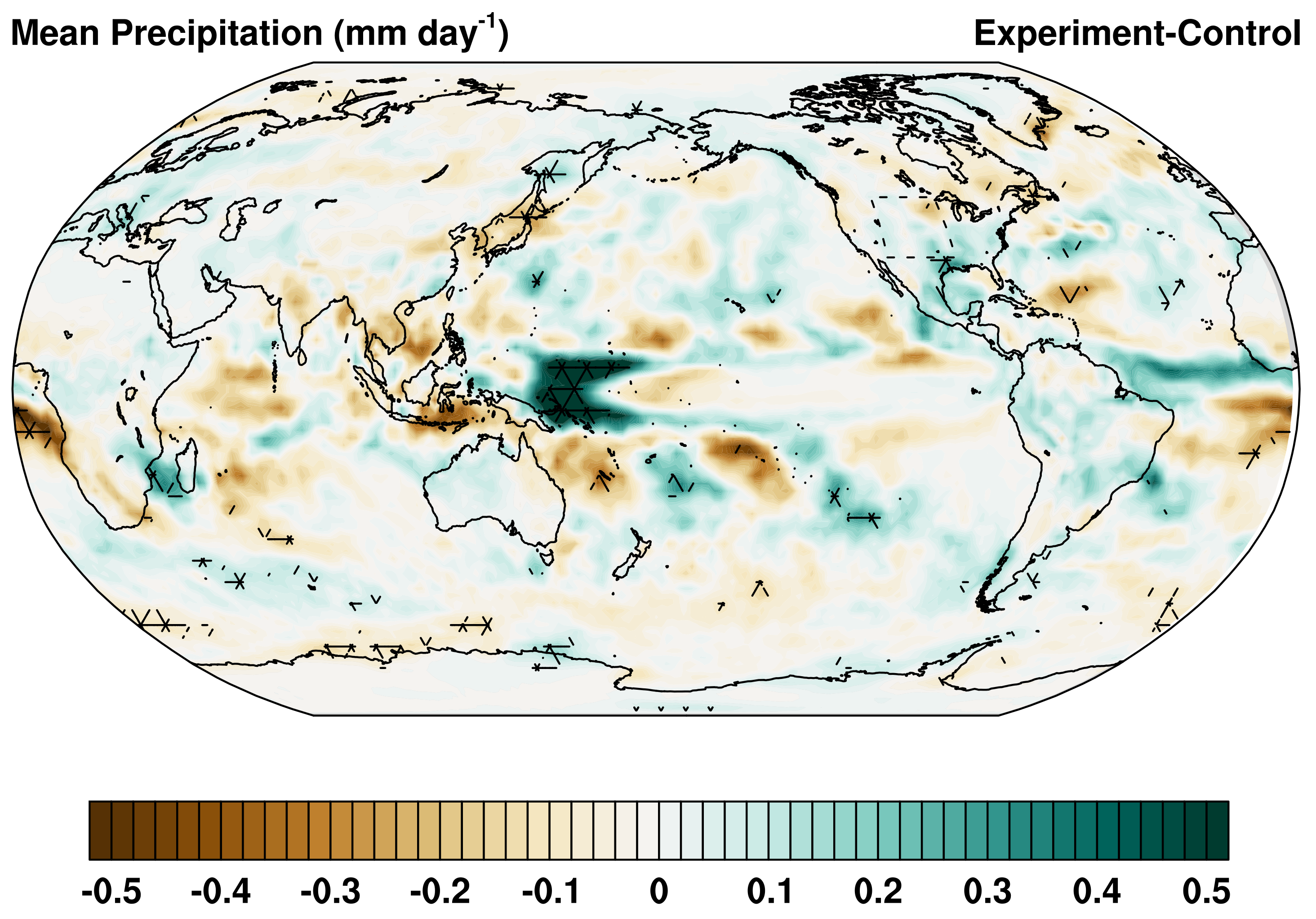
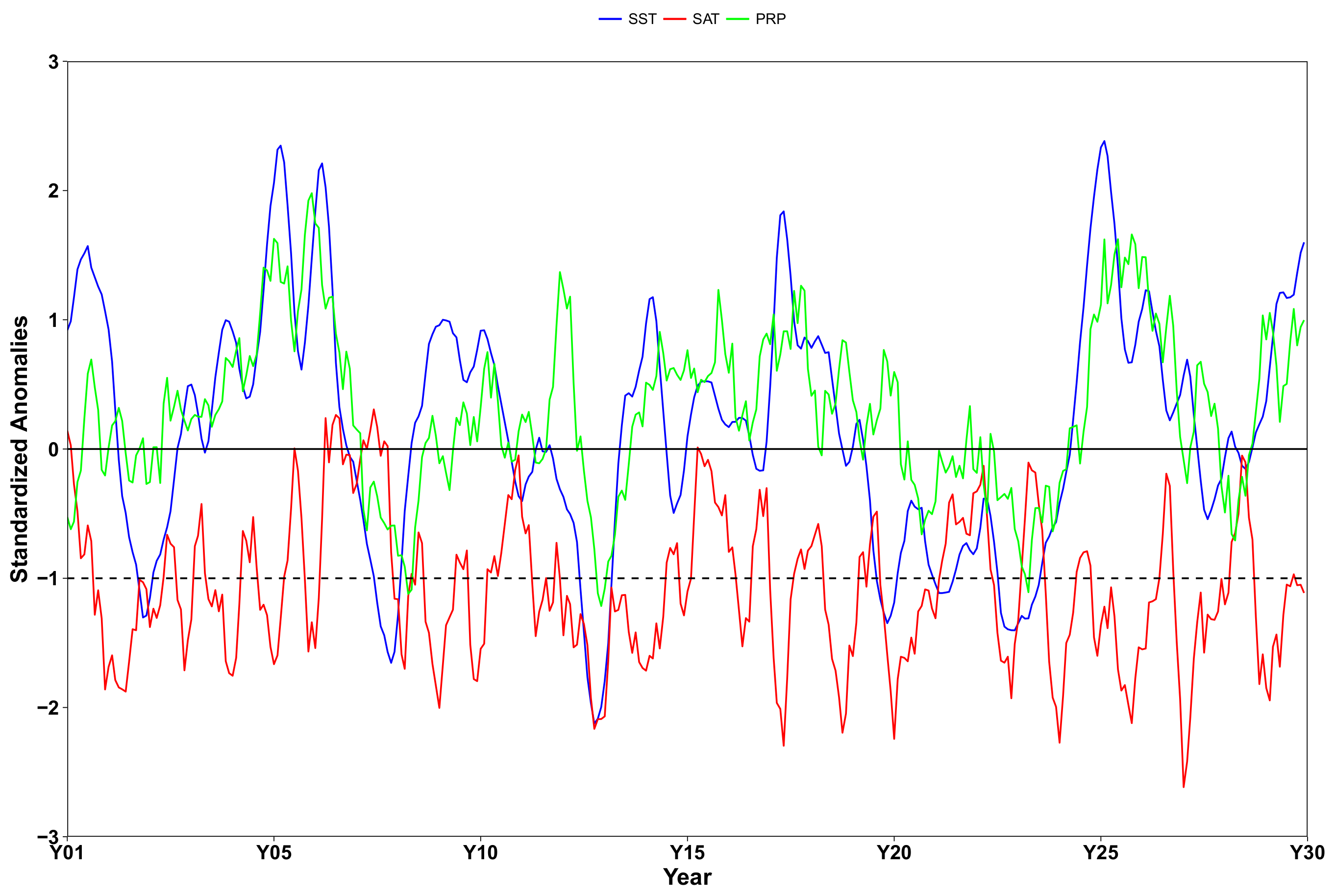

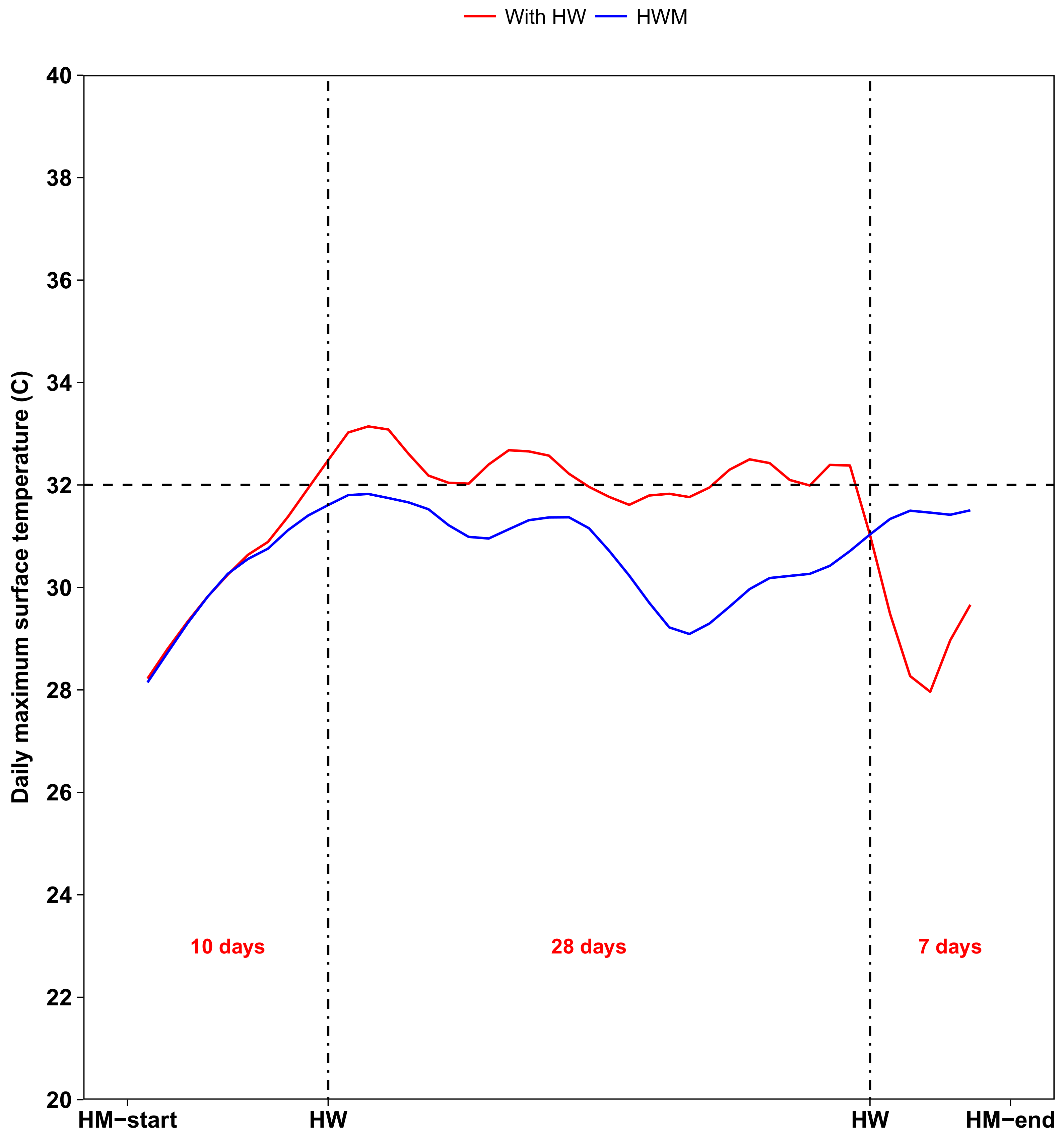
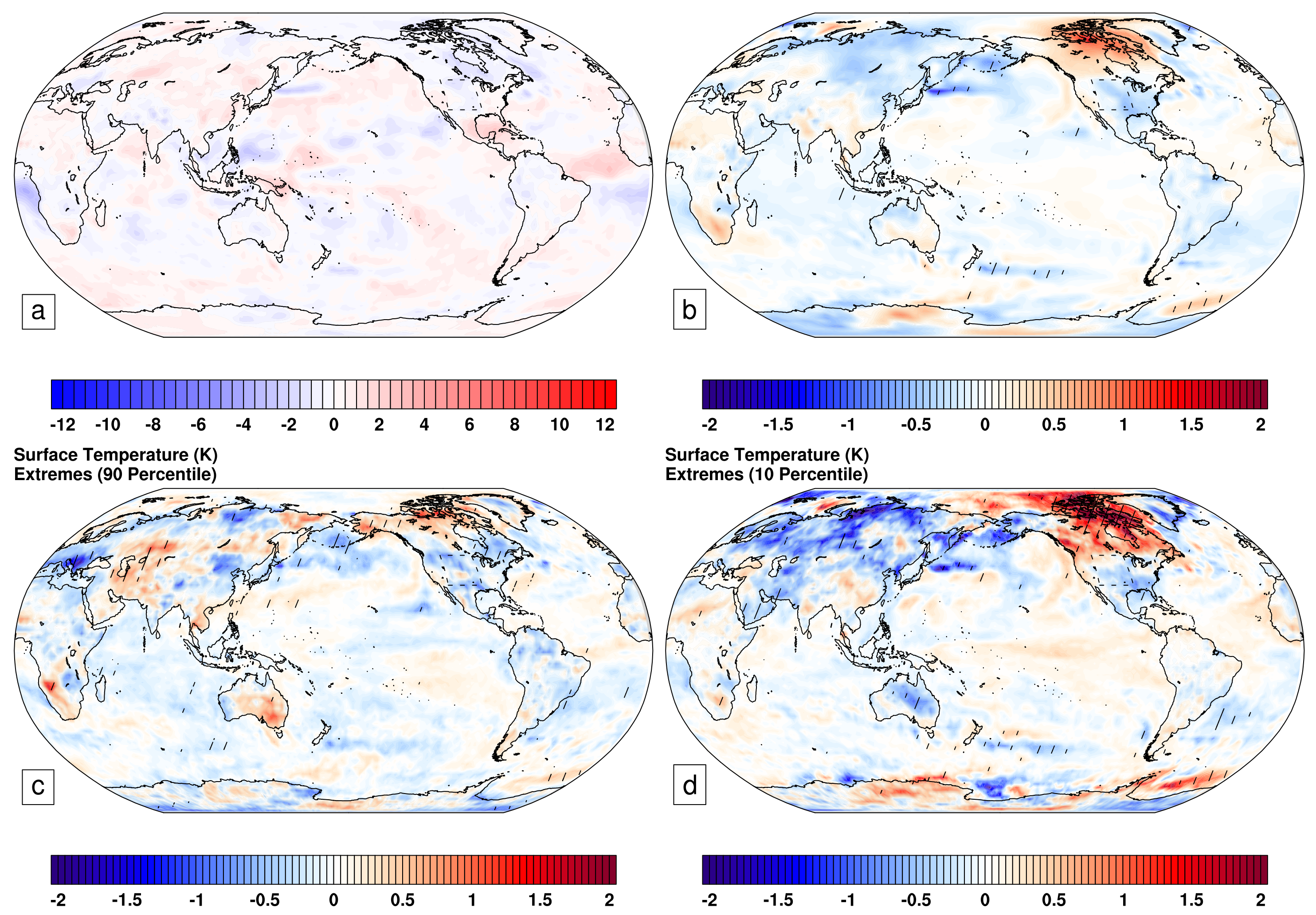
| No | Year No | Begin Date | End Date | HW Length (Days) |
|---|---|---|---|---|
| Y02 | 1851-07-01 | 1851-08-10 | 23 | |
| Y04 | 1853-07-19 | 1853-08-10 | 06 | |
| Y05 | 1854-07-12 | 1854-08-09 | 04 | |
| Y10 | 1859-07-18 | 1859-08-14 | 11 | |
| Y11 | 1860-06-24 | 1860-07-17 | 07 | |
| Y12 | 1861-07-09 | 1861-08-19 | 06 | |
| Y14 | 1863-06-21 | 1863-08-03 | 04 | |
| Y18 | 1867-06-25 | 1867-07-29 | 09 | |
| Y19 | 1868-08-06 | 1868-08-28 | 06 | |
| Y21 | 1870-07-09 | 1870-08-22 | 28 | |
| Y24 | 1873-07-15 | 1873-08-03 | 07 | |
| Y24 | 1874-07-03 | 1874-08-11 | 23 | |
| Y25 | 1875-07-20 | 1875-08-20 | 15 | |
| Y27 | 1877-06-22 | 1877-08-05 | 28 | |
| Y29 | 1878-06-24 | 1879-07-24 | 14 | |
| Y30 | 1879-07-15 | 1879-08-21 | 21 |
Publisher’s Note: MDPI stays neutral with regard to jurisdictional claims in published maps and institutional affiliations. |
© 2021 by the authors. Licensee MDPI, Basel, Switzerland. This article is an open access article distributed under the terms and conditions of the Creative Commons Attribution (CC BY) license (https://creativecommons.org/licenses/by/4.0/).
Share and Cite
Dipu, S.; Quaas, J.; Quaas, M.; Rickels, W.; Mülmenstädt, J.; Boucher, O. Substantial Climate Response outside the Target Area in an Idealized Experiment of Regional Radiation Management. Climate 2021, 9, 66. https://doi.org/10.3390/cli9040066
Dipu S, Quaas J, Quaas M, Rickels W, Mülmenstädt J, Boucher O. Substantial Climate Response outside the Target Area in an Idealized Experiment of Regional Radiation Management. Climate. 2021; 9(4):66. https://doi.org/10.3390/cli9040066
Chicago/Turabian StyleDipu, Sudhakar, Johannes Quaas, Martin Quaas, Wilfried Rickels, Johannes Mülmenstädt, and Olivier Boucher. 2021. "Substantial Climate Response outside the Target Area in an Idealized Experiment of Regional Radiation Management" Climate 9, no. 4: 66. https://doi.org/10.3390/cli9040066
APA StyleDipu, S., Quaas, J., Quaas, M., Rickels, W., Mülmenstädt, J., & Boucher, O. (2021). Substantial Climate Response outside the Target Area in an Idealized Experiment of Regional Radiation Management. Climate, 9(4), 66. https://doi.org/10.3390/cli9040066






